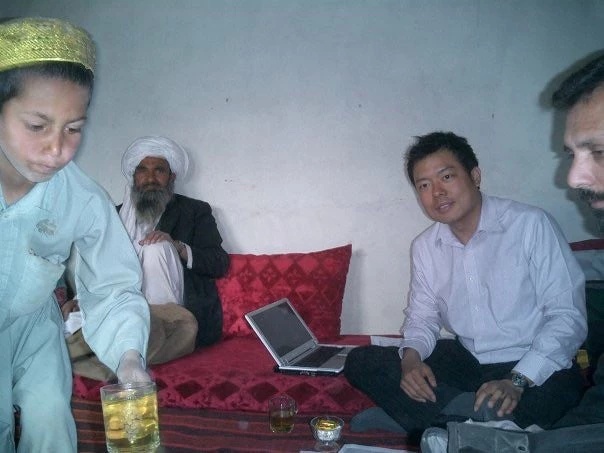 Bangladesh women
Bangladesh women
“Harassment on the bus is so bad, we walk instead.” That’s what our local research team heard while interviewing women in a large slum located next to upscale neighborhoods around Bangladesh’s capital, Dhaka. The interview was part of the pre-pilot for the DIGNITY (Dhaka low Income area GeNder, Inclusion and poverTY) survey in 2017.
We were testing a new questionnaire to better understand barriers to women’s work in urban areas, focusing on potential constraints to women joining the labor force, such as time spent on household chores, demand for childcare, work location, and access to public transportation. These topics are seldom covered well in traditional household surveys or labor force surveys.
When we spoke to women in the slums, each interview gave us a glimpse of a situation fraught with difficulty and insecurity. This data was used for the report "What Works for Working Women? Understanding Female Labor Force Participation in Urban Bangladesh". But the preparation for the survey revealed for us how important gender-based violence (GBV) is to constraining women from income opportunities.
Collecting data on GBV is not something to be considered lightly. Asking women about their experience with sexual assaults – whether by strangers or from people they know – might retraumatize them. To that end, the WHO has codified the ethical recommendations and developed a comprehensive survey protocol.
When asked whether they feel safe outside their home at any time of the day, women trail men by 30 percentage points
Due to a small budget, we had to limit the scope of the survey to a few questions about perceptions of harassment in public space. Specifically, we asked whether men and women both have concerns related to harassment near their houses, in the neighborhood, or outside their neighborhood.
These few questions in low-income neighborhoods revealed a lot. Most men and women (98 percent) feel safe at home during the day. But when asked whether they feel safe outside their home at any time of the day, women trail men by 30 percentage points; only 69 percent of women feel safe compared to almost all men. In addition, both men and women are concerned about safety in public spaces, but the risk of harassment affects women disproportionately. This is probably not surprising but putting a number on it is, we think, a useful benchmark.
The outsized risk of harassment that women face daily, in turn, affects their decisions whether to take a bus or even whether to get a job. The data confirms this theory: women who feel safe outside the home are 9.6 percentage points more likely to have jobs. This figure is quite big, given that about 58 percent of female respondents are in the labor force.
But what can be done?
To address harassment of women and girls in public transport, the World Bank Transport Global Practice is working in innovative ways with transport providers in countries like Nepal and Mexico to ensure transport operators are trained to intervene and stop sexual harassment in a nonviolent manner , provide free Wi-Fi on the bus and an app to alert the driver when someone needs help, along with efforts to bring more women into the sector as transport operators.

For street harassment, an app called HarassMap in Egypt allows users to see where sexual harassment is happening, and to avoid those areas. The app receives reports of sexual harassment through SMS messages and uploads them in real time. A similar version of this tool called SafetiPin also exists in India.
Back in Dhaka, the World Bank Group is tackling some of the problems that we discovered in the survey. The Dhaka City Neighborhood Upgrading Project, which started earlier this year, aims to enhance public spaces and improve urban services in four neighborhoods under the Dhaka South City Corporation. It incorporates a number of innovative urban design features to make the urban space more inclusive for women and other groups of people with special needs.
Jon Kher Kaw, the task team leader, told us that his team facilitated a pilot “Public Space Public Life” study in selected locations and found that women were not well represented in everyday life in public spaces. Another study under the project further identified two hurdles for women to use the urban space: poor safety and inadequate design. Public infrastructure and amenities were generally not for purpose, not provided for or ill maintained. Roads without sidewalks or bridges that are difficult to climb can prevent women from using public spaces. Hygienic public toilets were also not readily available for use.
Both men and women are concerned about safety in public spaces, but the risk of harassment affects women disproportionately
To tackle these challenges, the Neighborhood Upgrading Project includes activities like public awareness campaigns to improve behavior in neighborhood streets and other public spaces, and to facilitate the process of seeking help for those who need it. The neighborhood upgrading plan also will include recreational facilities like parks and playgrounds and integrated community centers, which will have hygienic public toilets and neighborhood service spaces, such as police posts for safety and security. These new amenities are not only designed to provide socially acceptable space for women in the neighborhood, but are also expected to increase foot traffic, thus improving the perception of safety in the neighborhood. Paved streets and expanded sidewalks will also improve walkability and access, especially for women with strollers and those with disabilities.
It is very encouraging to learn about how new ideas are being carried out on the ground. We are excited to see how they take shape and how women in these neighborhoods can assert their rights to public space as equal citizens.
What are some of the efforts you have seen communities make to improve the safety of public spaces? We hope you will enter responses and/or feedback in the comments section below.



Join the Conversation